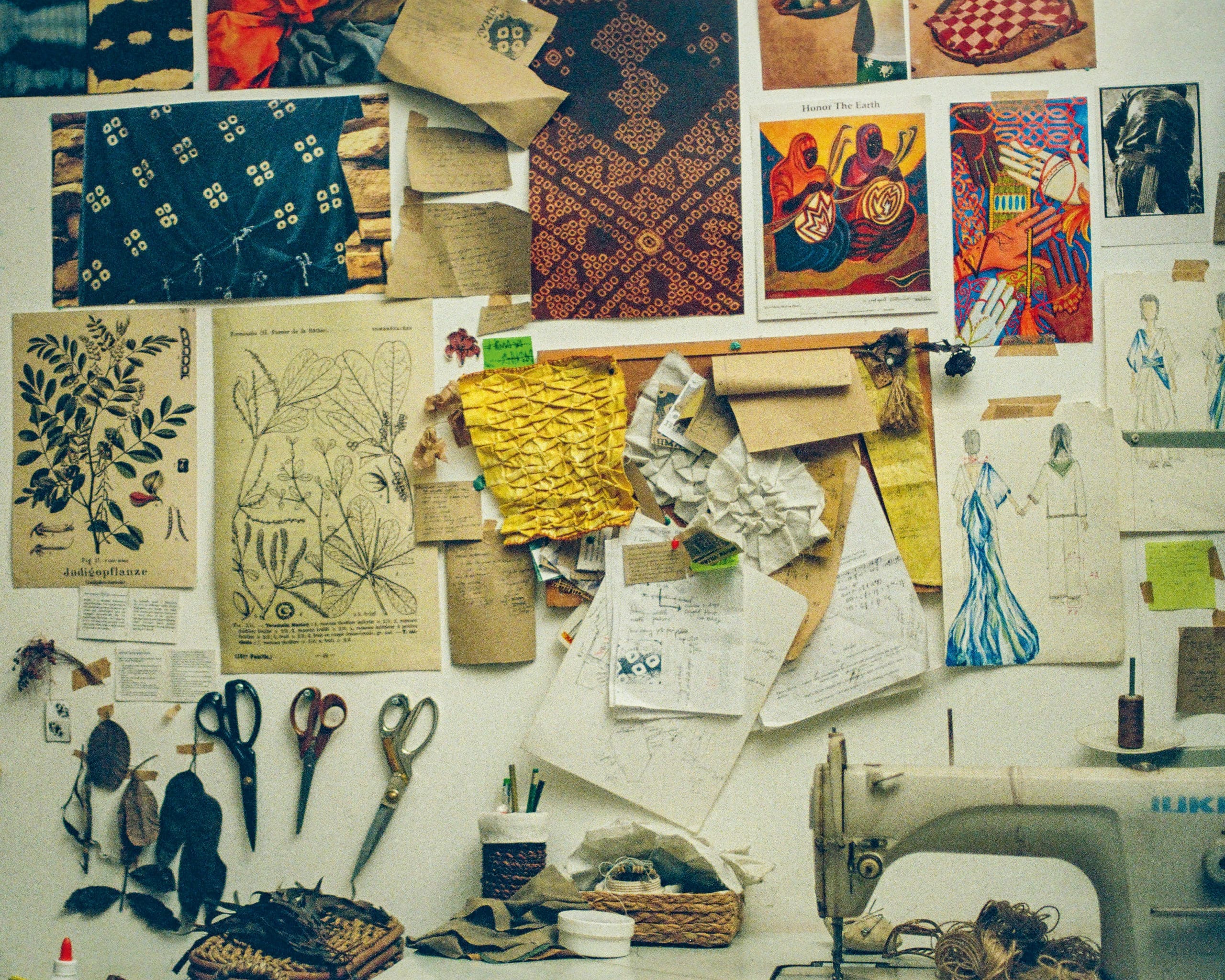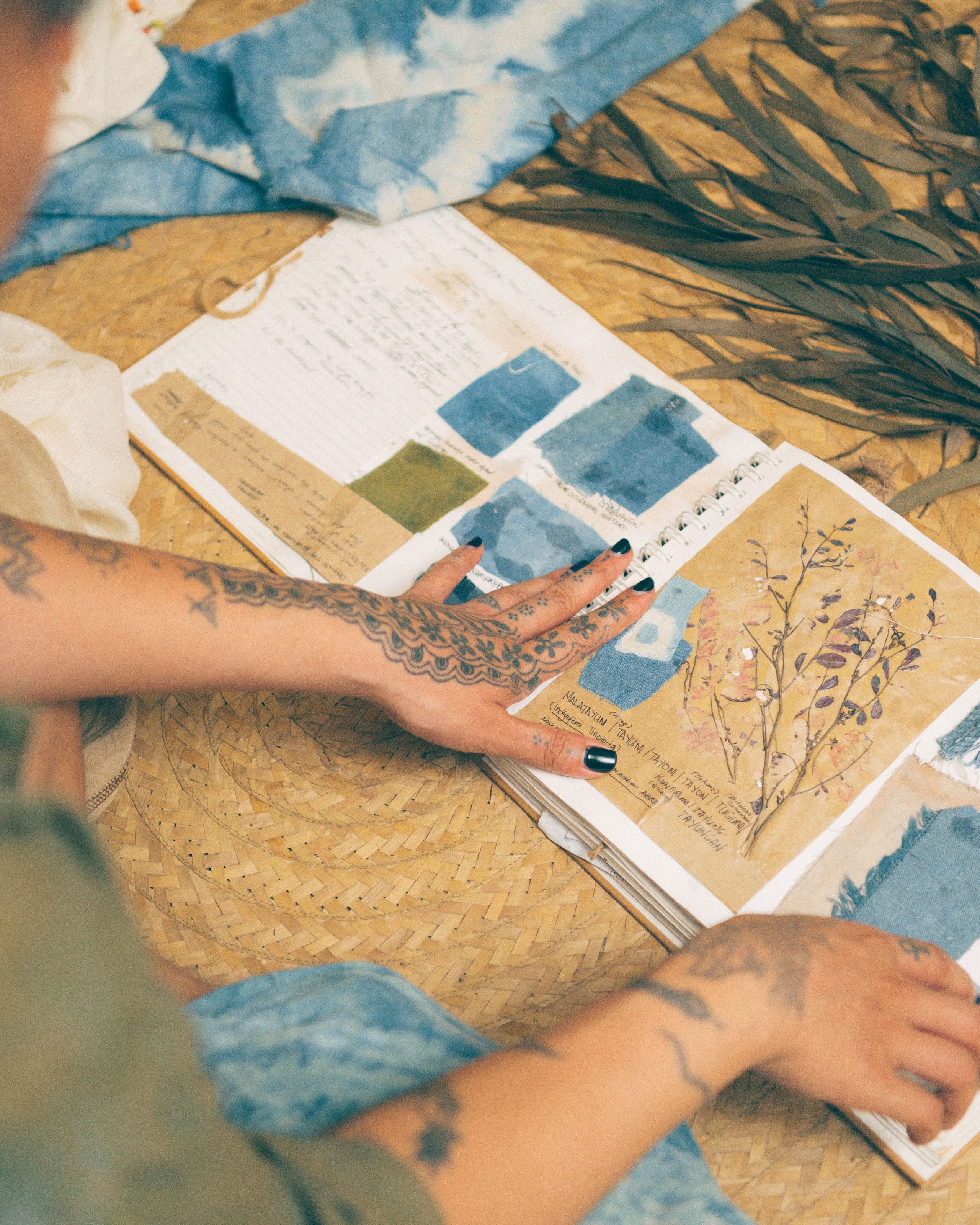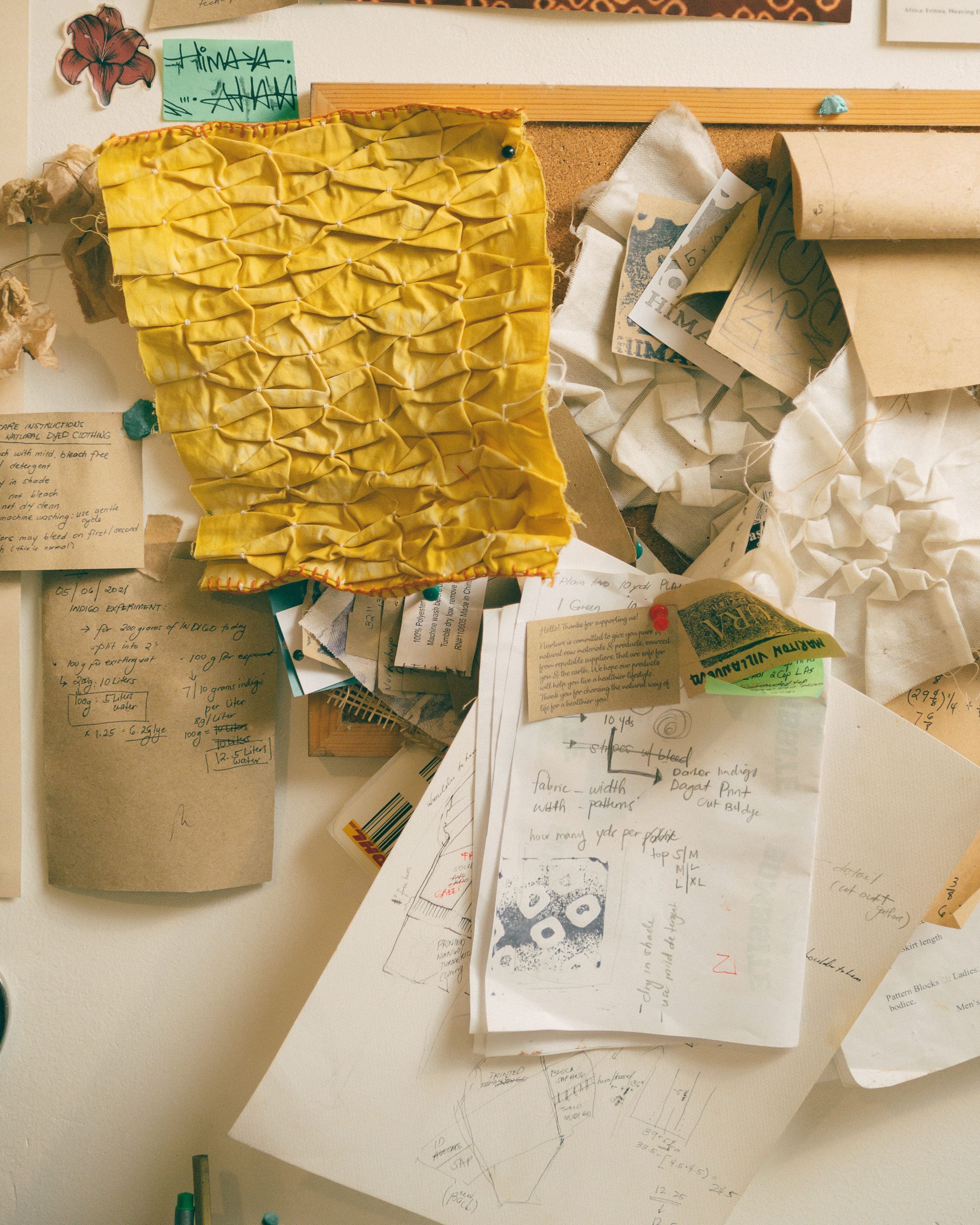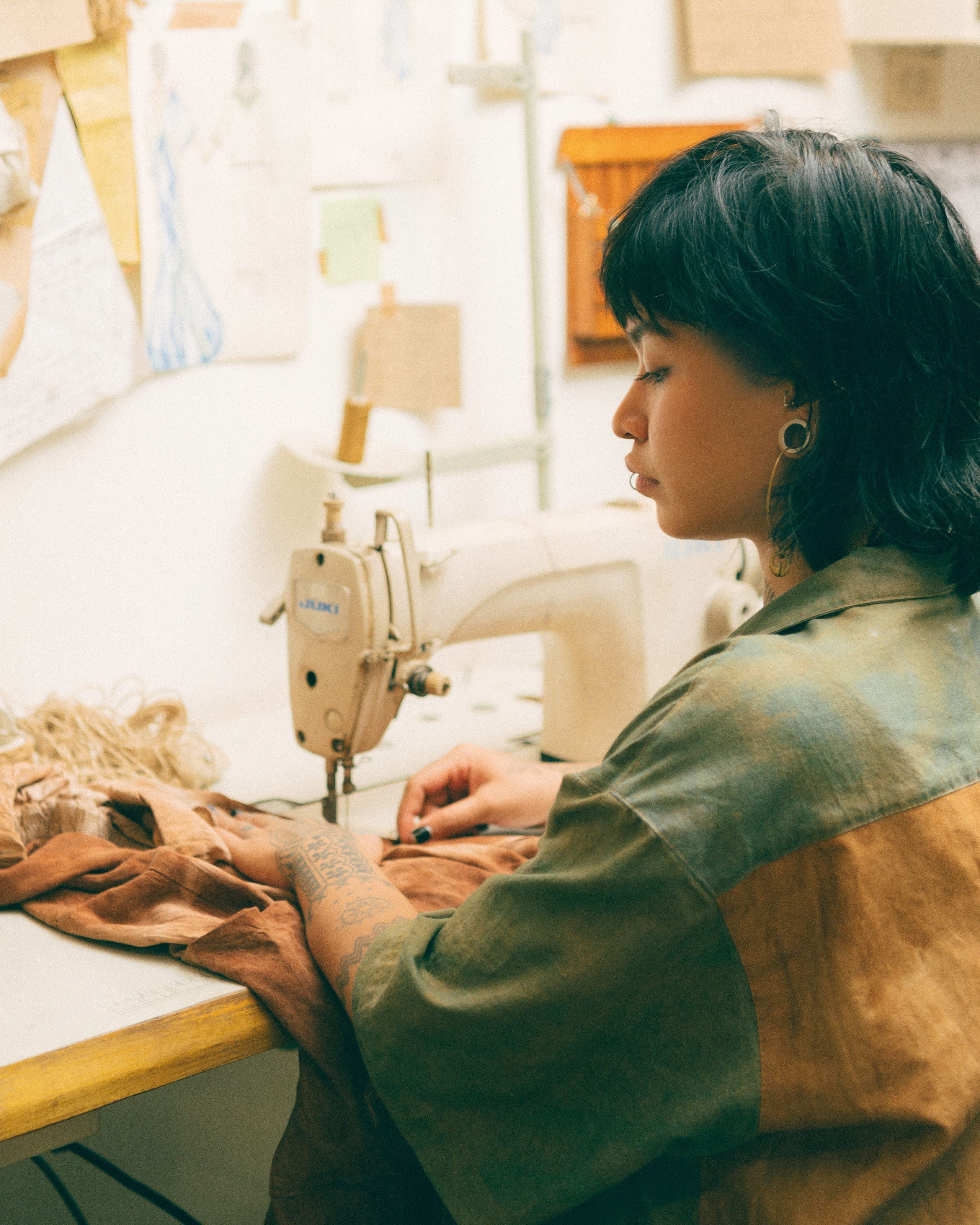“As we progress with technology, we should also go deeper in our connection with nature and how to work with our environment.”
When Mariton Villanueva greets us at eight in the morning, she’s dressed in a brightly hued halter top colored by unique blues and purples with offbeat silver embellishments. Her look is as captivating as her burgeoning brand, with vividly-dyed clothes celebrating its Filipino origins through loose silhouettes.
Through Himaya, she adds an experiential dimension to the power of clothing, both in its wearing and viewing. Each piece she creates is an homage to tradition and heritage, reflecting the magnetism of Philippine culture.

At six years old, Mariton would visit her grandmother and practice arts and crafts. They would work on crocheting, beadwork, and hand stitching on fabric. “My grandmother was always the fashion forward one in my family,” Mariton tells Vogue Philippines.
Mariton admits she has always been inspired by the simplicity of traditional Filipino practices, particularly the customs of the Indigenous communities. Fascinated by the way their garments wrap around their bodies, she leaned into natural dyeing as a study of anthropology, a dive into a reviving art form already embedded in Philippine tradition.
“You can see the history of a certain community with every dye. The plants used for dyeing are the same used for their medicine and rituals. They are a mirror of their natural, ever-evolving environment,” she says.
Even during her time at fashion school, she shares that she constantly questioned herself, her practices, and the movement of the community.
“What could be improved, where can we grow, or how could we support each other more? How can we help communities more?” Mariton says. With every Himaya piece, she wants to demonstrate the timelessness of heritage craft and the significant role of Philippine communities in discovering the true essence of creativity.
“When I talk to the weaving mothers and grandmothers, I bring up that weaving takes a lot of time, and things crafted with time have high value.”
The Culture of Dialogue
At the moment, Villanueva is working with HABI: The Philippine Textile Council and the Sunrise Weavers in Ibaan, Batangas to reintroduce natural dyeing. She will be in Ibaan for a month to help grow local cotton, learn weaving, and teach the weavers how to dye. “I just give to them what I can in terms of energy and learnings, and whatever comes with that,” she shares. The project is a cultural exchange between the designer and the Indigenous communities, a symbiotic relationship that allows the community to practice their creativity while simultaneously reclaiming their heritage through new techniques brought in by Villanueva.

“When I talk to the weaving mothers and grandmothers, I bring up that weaving takes a lot of time, and things crafted with time have high value,” she says. “Explaining how much each process is worth is important to me. I try to be transparent with them about my methods and explain that in full so that everyone gets treated fairly.” She hopes that by giving the artisans the power of awareness, they will be able to price their creations at the value their craftsmanship deserves.
The reconstruction of culture and craft encourages an open discussion on the fair treatment of skilled workers that she works alongside. Villanueva hopes to promote a sense of economy and self autonomy for the weavers by raising questions. “Although handwoven products are expensive,” she says, “the weavers earn really little from it for the work they do. It’s such an intricate process.”
An Ongoing Process
Villanueva likens her journey to being a pioneer of a new frontier, with something novel to discover everyday. “Here’s a piece of cotton textile. Look at where there are imperfections in the dye,” she says. “If you look at it really closely or under a magnifying glass, there are specks and dirt in the thread. You have to be intricate and careful with the process if you want a specific type of look.”

She hopes that eventually, she can have greater control of the design and to be able to customize textiles. “With natural dyeing, the learnings are constant. I learn from my mentor, the communities, the internet, books, and other natural dyers.”
Villanueva is currently creating a collection of one-of-one pieces that are ready to wear. “The last collection was inspired by our tradition of weaving and dyeing, but I’ll be making this particular collection while I’m in Ibaan,” she shares. “I’m pretty sure moving to a different area will change and affect my creative process once I learn to weave or when I learn more about their history and their story.”
Poetry of Movement
Peering through an anthropological lens, she tells a compelling narrative through her creations, fueled by spirit and dedication. Protecting what is slowly becoming a disappearing art, Mariton Villanueva shines a light on the human hand that resonates within each and every one of us.

There is something irresistible about Villanueva’s Himaya pieces; while every garment is a bridge to the past, connected to an art honed by master elders, it’s also a constant exploration of nature moving forward through distinct hues. From the plant dyes chosen to the fluidity of the clothing shape, there’s a dynamic energy, graceful yet elemental, imbued in each garment.
“As we progress with technology, we should also go deeper in our connection with nature and how to work with our environment,” Mariton emphasizes. “That’s how we’re going to evolve.”

